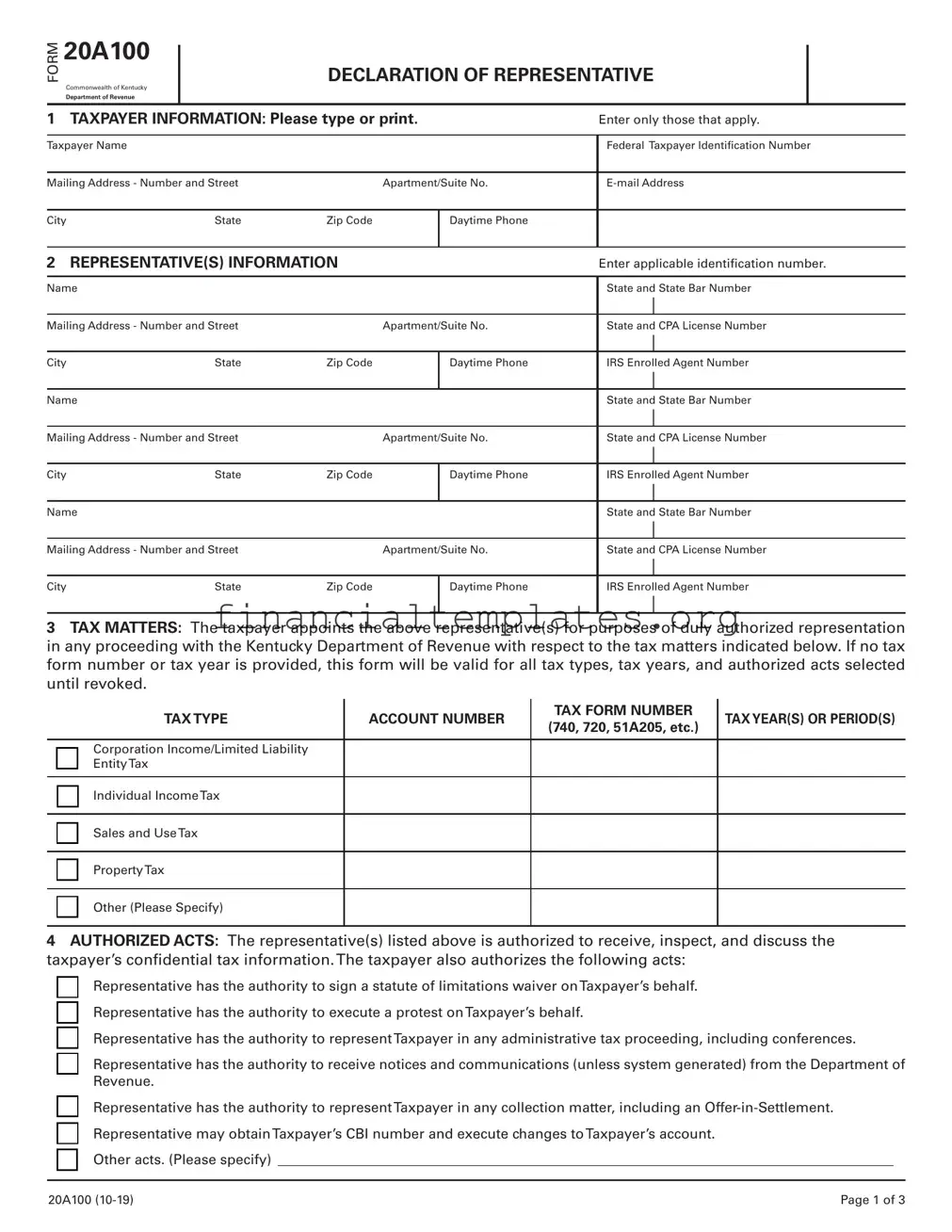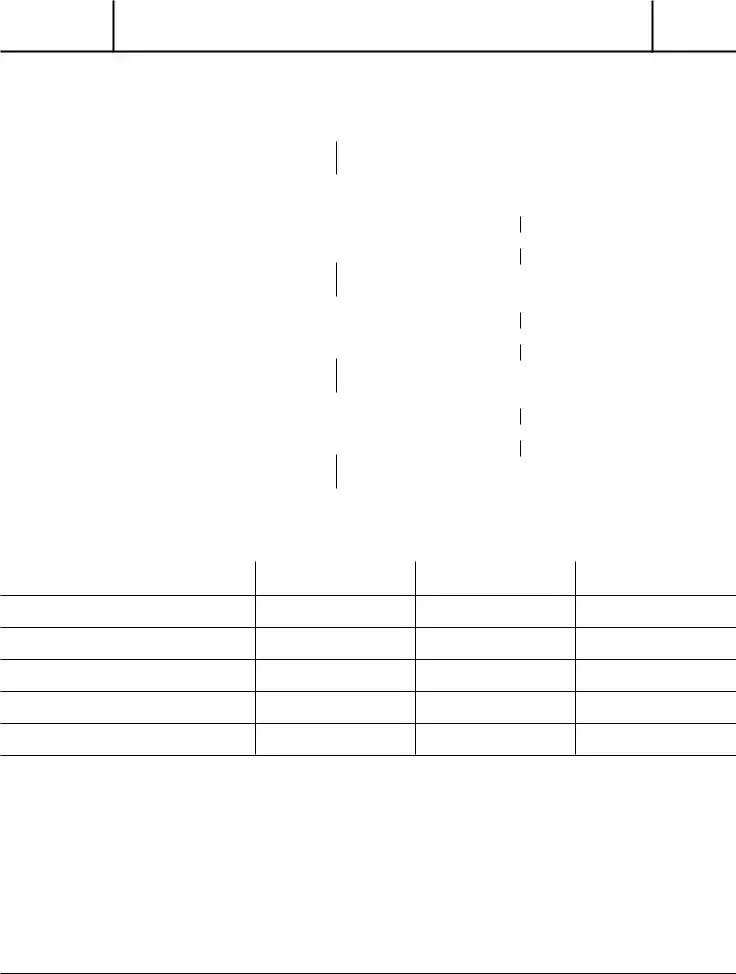The Tax Power of Attorney (POA) form, known in some jurisdictions as form 20a100, serves as a legal document authorizing someone else to manage your tax matters. A similar document is the General Power of Attorney form. This document extends broader authorization, allowing the appointed person to handle a wide range of affairs beyond taxes, including financial and legal decisions. Both documents involve appointing an agent to act on one's behalf, but the General Power of Attorney covers a more extensive array of responsibilities.
Another document related to the Tax POA is the Healthcare Power of Attorney. While it diverges in focus—concentrating on healthcare decisions rather than financial matters—it similarly involves appointing an individual to make important decisions on someone else's behalf. The fundamental similarity is the trust placed in another person to make critical choices in scenarios where the principal cannot do so themselves.
The Durable Power of Attorney (DPOA) is closely related to the Tax POA. The key distinction is its durability; it remains in effect even if the principal becomes mentally incapacitated. While a Tax POA is specifically for tax-related issues, a DPOA can encompass tax matters among other things, depending on how it is written, making it a versatile tool in estate planning and beyond.
The Limited Power of Attorney is another related document, offering a more narrowed authorization compared to the Tax POA. It grants the agent power to act in specific situations or for particular tasks, which can include, but is not limited to, tax matters. This precision in scope provides a tailored approach to delegating authority.
The IRS Form 2848, Power of Attorney and Declaration of Representative, is a federal document specifically designed for tax purposes, much like the Tax POA form. It authorizes individuals, such as accountants or attorneys, to represent others before the IRS, handling their tax affairs. Both serve the purpose of enabling representation in tax matters, although the IRS form is recognized at a federal level.
A Revocation of Power of Attorney is a document that, as its name suggests, revokes the powers granted in any Power of Attorney form, including a Tax POA. This document is crucial for situations where the individual no longer needs or trusts the appointed agent to handle their affairs. It showcases the fluidity and control individuals have over their authorized representations.
The Business Power of Attorney is a vital document for entrepreneurs and business owners, permitting agents to make business-related decisions. Similar to a Tax POA, which allows handling of tax matters, this document empowers an agent to oversee various business affairs. The principal difference lies in the focus on business operations rather than personal tax issues.
The Declaration of Financial Hardship is a form used to demonstrate an individual's financial difficulties, often to request tax relief or installment plans from tax authorities. While not a Power of Attorney, it shares the context of tax matters, enabling individuals to manage and negotiate their tax liabilities based on their financial situation. It reflects the breadth of documents that assist in navigating tax responsibilities.
Lastly, the Estate Tax Planning form is intricately linked to tax affairs, focusing on the strategic planning to minimize estate taxes upon an individual's death. Though primarily used for estate planning rather than immediate tax representation, it ties into the broader theme of managing one's financial legacy, including tax implications. Like the Tax POA, it plays a pivotal role in a well-rounded tax and estate strategy.



